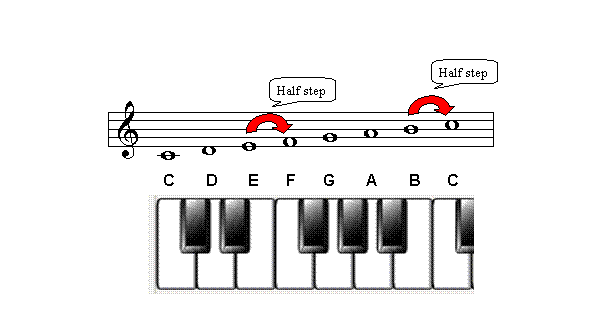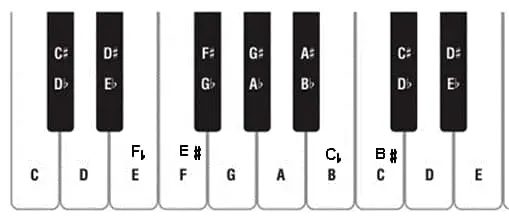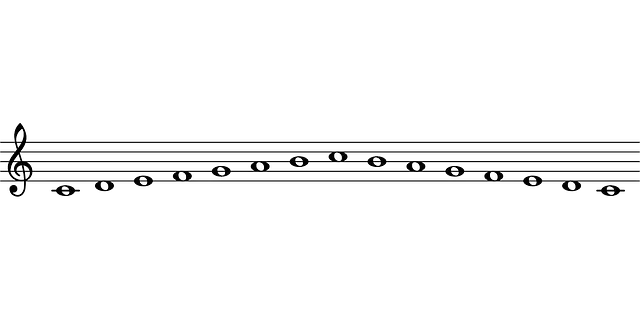- Home
- Piano Scales
- Major Scales
Major Scales for Piano
This article may contain compensated links. Please read the disclosure for more info.
What is the difference between major and minor? How many major scales are there really? And how about the scale formula? Lots of questions... Learn about it here!
Difference Between Major and Minor
First things first...
Scales are notes (or pitches) arranged in a pattern of whole and half steps (or tones and semitones) from lowest to highest.
But What is The Difference Between Major and Minor?
What makes a scale sound “major” is the specific pattern of half and whole steps between the notes in the scale.

The major sound is often referred to as sounding happy, or brighter compared to the sound of minor, which many think sound more melancholic or darker.
Although most music mixes elements of both major and minor, examples of a well known song in major is “Twinkle, Twinkle Little Star”, and in minor “God Rest You Merry Gentlemen”.
TIP: As you continue to learn piano it's a good idea to get a great piano scale, chords and arpeggios technique book like this one: Basic Book of Scales Chords and Arpeggios.
How Many Major Scales Are There?
Actually, in a way there is only one…! At least only one pattern.
The easiest way to see this pattern or formula is in C major, since this scale uses only white keys (or natural notes), without sharps or flats:
 All white keys next to each other with a black key between are a tone/whole-step apart. The white keys with no black key between are a semitone/half-step apart.
All white keys next to each other with a black key between are a tone/whole-step apart. The white keys with no black key between are a semitone/half-step apart.On the piano keyboard the smallest step from one key to the very next is a half step or a semitone.
You can see that between most white keys there is a black key, for example from C-D. These steps are called whole steps. (Two black keys with a white key between is also a whole step.)
But between E-F and B-C there is no black key. These are half steps or semitones.
The Magic Formula of a Major Scale
The specific order of whole (w) and half (h) steps in a major scale are:
(starting note)-w-w-h-w-w-w-h
This pattern works like a template.
By using the exact same pattern you can start from any note. Make the necessary changes using either sharps ♯ or flats ♭ to make the steps larger or smaller to fit the pattern; and it will become a major scale!
But I've Heard That There Are 12, or perhaps 15?
A scale can start from any note, or pitch.
And since we have 12 different music pitches in the Western musical notation, this then gives us 12 scales in major that we can play, each starting from a different pitch.
So, in that way we can say that there are 12 major scales, but only one major scale pattern. Makes sense?
However, when notating music, there are more possibilities!
As you may know, many of the pitches have two names. F# and Gb for example are called enharmonic, meaning that they sound the same.
Because they are the same note, just the name is different! Look at this piano keyboard to see the enharmonic pitches:
 Enharmonic pitches
Enharmonic pitchesAll the black keys on the piano have two names depending on what white key they are either “raised” (#) or “lowered (b) from.
- So if an F is raised with a sharp(#) to the black key to the right of it, it is called F#.
- If a G is lowered with a flat (b) to the black key to the left of it, it is called a Gb.
But this is actually the same key, so these "two" pitches sound the same (duh- we can see that it's the same key).
This is what enharmonic mean.
On the white keys a Cb is also the same as a B, a B# the same as a C, an E# the same as an F and an Fb the same as an E.
Theoretically we could write scales starting from each one of these pitches, including the enharmonic, but then some of the scales would have so many sharps or flats that it would be ridiculous.
So, in reality there is a limit.
We only use scales that have max up to 7 flats or sharps including C major that have none. That makes 15 major that you can write down.
More than enough!
However, when playing them, there are really only 12 different ones.
...So, if you play a scale in F# major and your (evil :) ) teacher tells you to learn the Gb major ...
You now know it’s the same thing!! Just written differently! Hah! :)





